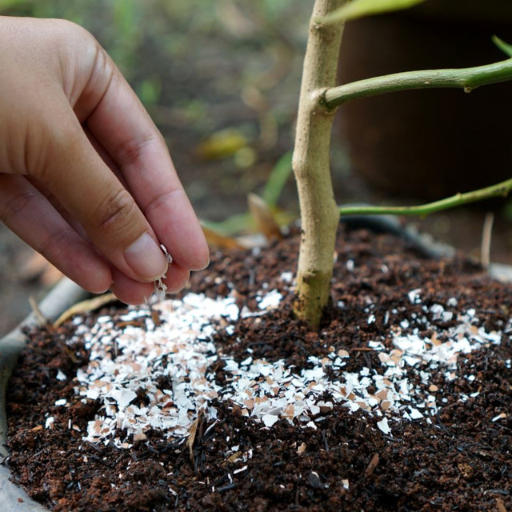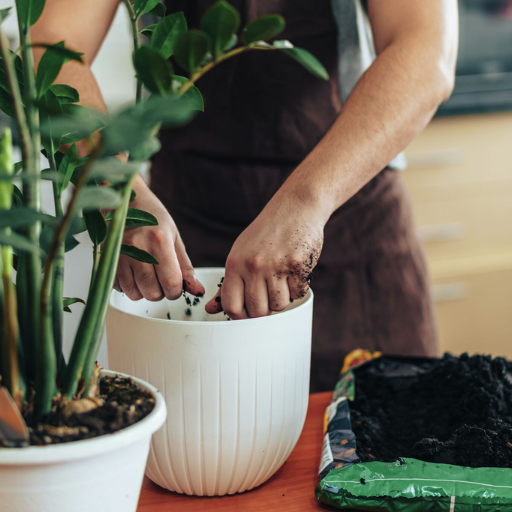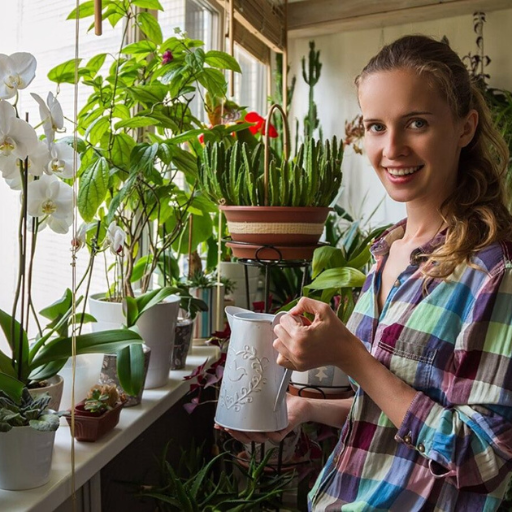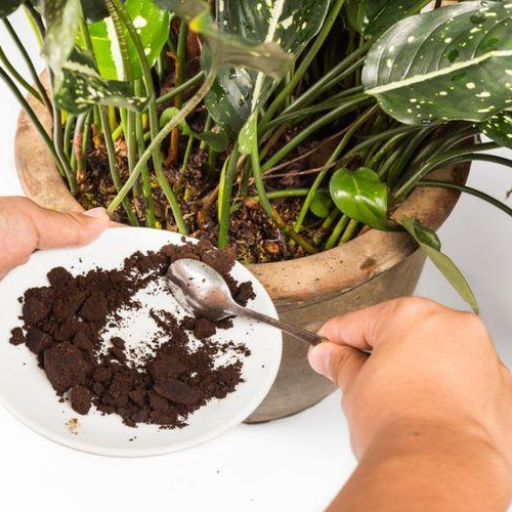Indoor plants bring life and beauty into our homes, but ensuring they thrive requires more than just regular watering. One key to maintaining vibrant and healthy houseplants is providing them with the right nutrients. In this blog, we will explore the benefits of using organic fertilizers for houseplants and guide you on how to select and apply the best types to promote optimal growth. Whether you are a seasoned plant parent or a novice with a budding interest, this guide aims to equip you with the knowledge to keep your indoor jungle flourishing. From understanding the different organic fertilizer options to practical tips on application, we cover everything you need to know to give your plants the best possible care.
What Makes a Fertilizer Organic?

To comprehend Organic Fertilizer
Their sources of organic fertilizers include plant residues, animal wastes and mineral deposits; they do not contain synthetic chemicals. Such fertilizers improve soil structure, enhance microbial activity and provide essential nutrients slowly like nitrogen, phosphorus, and potassium. By using organic fertilizers, you would promote the well-being of your houseplants because they supply the required nutrients for the plants in a regular way which sustains a healthy ecosystem in the soil.
Major Nutrients in Organic Plant Fertilizer
When analyzing major nutrients in organic plant fertilizer it is important to focus on three primary elements: nitrogen (N), phosphorus (P) and potassium (K) referred to as NPK. Nitrogen is vital for healthy leaf and stem growth making your plants look lush green. Phosphorus is important in root development and flowering thus it helps strong foundation as well as increased bloom production. Potassium also aids overall plant health through regulation of various physiological processes such as water uptake and enzyme activity leading to improved resistance to diseases outbreaks.
Furthermore, other than these primary nutrients, there are also secondary nutrients that are present in organic fertilizers such as calcium, magnesium, sulfur, iron, manganese, zinc cobalt molybdenum boron etc., referred to as trace elements or micronutrients. Although these microelements are needed by plants in small amounts they serve various functions that contribute to robust plant life. Your houseplants can benefit from natural slow release through these kinds of fertilizers hence fostering a healthy balance that is sustainable.
Organic Fertilizers Benefits For Indoor Plants
There are several benefits associated with the use of organic fertilizers on indoor plants. The first advantage is that they enhance soil structure enabling it hold more water and retain more nutrient ions. This can be very crucial for maintaining good indoor plant health since stronger roots formation would result from better soil structure. Secondarily most organic fertilizers have time-release ability of nutrients to plants. By having a continuous and balanced feeding, this slow nutrient release ensures that the synthetic fertilizers in your garden do not burn the leaves or over-fertilize them. Lastly, organic fertilizers promote a healthy soil microbiome and thus supports growth of beneficial microorganisms which increase nutrient uptake by the plant and its disease resistance. These micro-organisms break down organic matter into usable forms thereby enriching the soil further and keeping plant life sustainable in natural friendly ways.
Why Use Organic Fertilizer for Houseplants?
Impacts of Houseplant Health
Utilization of organic fertilizers in houseplants significantly increases plant vigor by giving all the necessary nutrients to the plants in their natural form. Organic fertilizers help to improve soil structure since they promote the growth of beneficial microbes and ensure a balanced nutrient supply. The gradual release of nutrients helps prevent root burn as well as nutrient overload, which are common with synthetic fertilizers. Microorganisms also exist in organic fertilizers that can decompose organic matter into forms that can be easily absorbed by plants therefore enriching the soil and strengthening plant’s resistance against diseases, resulting in stronger and better looking houseplants. Therefore, application of these types of manures when growing indoor plants makes them better.
Long-term Benefits for Indoor Plants
Soil fertility and plant strength are some long-term benefits associated with using organic fertilizers on indoor plants.
- Soil Texture: In addition to increased soil texture and aeration caused by organic-based fertilizers over time, root development is enhanced resulting in overall good performance.
- Chemical Dependency Reduction: This is because; organic manure adds natural nutrients into the soil hence maintaining chemical dependence at low levels unlike use of chemically produced manure.
- Plant Protection: Regular use of Organic Fertilizer enhances plant’s natural defense systems hence reducing chances for pests’ infestation or diseases.
Including organic manures during your houseplant care procedures will result in more vibrant thriving plants being grown sustainably from a healthier base.
Difference Between Organic and Synthetic Fertilizers
Synthetic and organizations have distinct compositions, impacts on nature as well as advantages to crops. Composition:
- Organic Fertilizers: They usually come from things like composts,Manure,bone meal among other things made Naturally.This kind releases nutrients slowly after breaking down ensuring a continuous supply over time.
- Synthetic Fertilizers: Made through chemical compounds to make them available immediately after applying to crops; this is done by designing specific nutrient ratios for them which are more easily absorbed by plants.
Environmental Impact:
- Organic Fertilizers: They promote healthy soils through increased organic matter and beneficial microorganisms. This minimizes the risk of nutrient leaching and contamination.
- Synthetic Fertilizers: These may lead to pollution among aquatic ecosystems due to their runoff or leaching, causing nutrient enrichment. They do not enhance soil structure nor contribute into long term sustainability of soil.
Plant Benefits:
- Organic Fertilizers: Over time, they ensure that the soil remains fertile while making the plants able to withstand attacks from pests and diseases thus creating a balanced system that allows for healthy growth of crops.
- Synthetic Fertilizers: Rapid plant growth is realized as there is an immediate boost in nutrients. However, quick nutrient availability can sometimes be harmful leading to root burn or imbalance if it is not carefully managed.
Whether you choose organic or synthetic fertilizers depends on your particular plant needs as well as your gardening objectives. While organic ones encourage sustainable practices and maintain long-term soil health, synthetic ones only provide instant solutions towards achieving rapid plant growth.
Types of Organic Fertilizers for Houseplants

Compost and Its Benefits
Houseplants need compost, which is a valuable organic fertilizer for houseplants. It comes from the natural decomposition of kitchen scraps and yard waste among other organic materials rich in nutrients like the ones that can be found in a compost heap. The use of compost helps to improve soil structure by enhancing aeration as well as water retention. When applied to soils, it enhances the health of roots and minimizes soil compaction that might occur on their growth.
Moreover, beneficial microbes present in compost break down organic matter slowly thereby releasing nutrients gradually into plants. This ensures a more sustainable nutrient source compared to chemical fertilizers that result in fast but short-lived nutrient surges. Furthermore, composting reduces use of artificial fertilizers thus making gardening more sustainable and ecological. In summary, using compost provides an environment conducive for thriving plants hence promoting their growth and resistance against pests and diseases.
Liquid Organic Fertilizers
Being liquid-based makes liquid organic fertilizers suitable for giving houseplants an immediate burst of nutrients through foliar absorption or root uptake mechanisms. These may be such things as seaweed extract solution, fish emulsion or even compost tea mixed with water most often used as liquid organic fertilisers. Seaweed extracts contain many micronutrients like hormones and enzymes which help stimulate plant growth while also enhancing stress resistance in crops. Fish emulsion is rich with nitrogen essential for green leafy foliage development by plants while compost tea has both nutritive microorganisms necessary for better soil quality so that these vitalities are supported.
This way, one can apply them directly onto the ground or spray onto leaf surfaces ensuring even distribution of food supplements all over the surface area covered with this kind of liquid fertilizer. One should observe specified dilution ratios along with recommended application schedules so as not to overuse such products on your plant since this can retard growth instead of fostering it. Regular application will lead to Vigorous Growth, bright Colorful Blooms and also make the plants more disease resistant, hence being a very important part of houseplant care.
Slow-Release Granular Organic Fertilizers
As such, slow-release granules are organic fertilizers that slowly provide nutrients to plants for long periods of time. Sometimes these include items like bone meal, blood meal and feather meal which are slowly decomposed leading to release of the nutrients at plant pace. Slow release granules lessen the risk of nutrient leaching from the soil as well as the need to reapply them frequently unlike in case of using liquid fertilizer.
The benefits of applying slow-release granular fertilizers are improved soil structure, enhanced microbial activity along with root development. They work best for perennials trees and shrubs ensuring they receive long-term nourishment that will enable their current healthy state throughout.
These can be evenly spread on top or mixed into the upper layer around plant bases by simple broadcast application; with care taken never to over-fertilize by following company instructions on rates of application. By providing a steady source of rich nutrients to soils without depleting them, slow release granular fertilizers help maintain a healthy growing environment for plants.
How Often Should You Fertilize Indoor Plants?

Fertilizing Houseplants: Best Practices
For successful growth and good health, there are a few best practices which should be followed when fertilizing houseplants. Typically, houseplants should be fertilized during the active growing seasons of spring and summer. It is often suggested that during this time, it is good to apply fertilizers once in every 2-4 weeks. Fertilization for plants growing in low light or during their fall-winter dormant period ought to be reduced or stopped.
Selecting the Right Fertilizer
Choose a balanced water soluble fertilizer with an equal percentage of Nitrogen (N), Phosphorus (P) and Potassium (K) such as 10-10-10 or 20-20-20 formula. To avoid over-fertilization, dilute this product to half of the recommended strength.
Watching for Signs
Look out for any signs on plant nutrient deficiency or excesses. When leaves turn yellowish, they probably lack nutrients while burnt tips indicate overfertilization. Always stick to instructions given by each specific product label on how to apply it.
Adjusting for Plant Type
Different species may require different amounts of nutrients. For example flowering plants might require more phosphorus while leafy green plants would benefit from additional nitrogen supplies. Thus you need to adjust your fertilization program depending on each particular specimen’s requirements.
Thus, these practices will help your indoor plants grow well throughout the year.
Signs Your Plants Need Fertilizer
There are certain recognizable indications that your plants need some ‘feeding’:
- Slow/Stunted Growth: One of the major reasons why you can notice that your potted houseplant may be requiring some nutrition is its decline in growth rate observable at once. If a definite plant does not produce new stems /leaves as expected within the growing season, then it might suffer from malnutrition.
- Yellow Leaves: Leaves turning yellow or chlorosis may indicate lack of important nutrients like nitrogen, magnesium or iron. The older lower leaves are usually the first to be affected by this disorder.
- Pale Foliage: When leaves appear pale and lose their original green color, it is often because they lack nitrogen and other basic substances that take place in photosynthesis.
- Weak Stems: If your plants have weak stems that easily break off from the plant then you have a potassium deficiency which leads to poor overall sturdiness in the plant.
- Poor Flowering or No Blooms: Which means there’s a shortage of phosphorous if flowers are lacking in flowering plants or if they’re small and fade in comparison with previous years’ blossoms.
Therefore, one can quickly identify nutrient deficiencies upon close examination of these symptoms and maintain the health of their household crops.
Seasonal Fertilizing Tips for Indoor Plants
To maximize your indoor plants’ health and growth according to the seasons, consider using this brief guide based on leading sources:
- Spring: Begin fertilizing your houseplants as days lengthen and growth resumes. For new growth, use every 2-4 weeks a balanced water soluble fertilizer.
- Summer: Keep feeding them through peak growing season. Most plants require all-purpose fertilizers every two to four weeks. Vary accordingly depending on specific requirements of different species.
- Autumn: As lighting decreases begin cutting back on fertilizing. Now decrease frequency to 4-6 weeks or shift to low strength formulae. This will help them go into dormancy better prepared for reduced light levels during fall/winter months.
- Winter: Many indoor houseplants enter winter dormancy phase when they need little or no feeding at all. It is also harmful to overfeed at this time because high levels could lead to nutrient build up as well as root damage.
Fertilizing your houseplants differently according to the seasons guarantees that they receive appropriate nutrients at different times enhancing their wellbeing as well as growth in all seasons.
Choosing the Best Organic Fertilizer for Different Houseplants

Fertilizers for Flowering Plants
When choosing the best organic fertilizer for flowering plants, I focus on products that provide a balanced nutrient mix tailored to promote blooms. Organic options like compost, worm castings, and fish emulsion are my go-tos because they not only enrich the soil but also enhance microbial activity, which is vital for robust plant health. I ensure the fertilizer has a higher phosphorus content, as this is crucial for flowering. Additionally, I look for slow-release formulas to provide a steady supply of nutrients over time, encouraging consistent growth and vibrant blooms.
Best Fertilizers for Succulents and Cacti
When choosing the best organic fertilizer for succulents and cacti, I prioritize a balanced nutrient mix with a focus on low nitrogen content. This is because succulents and cacti are adapted to nutrient-poor environments, and too much nitrogen can lead to leggy growth. I prefer using products like worm castings or compost tea in diluted forms to gently nourish these plants without overwhelming them. Additionally, I favor slow-release formulas that offer a gradual nutrient release, ensuring the plants receive a steady supply without the risk of nutrient buildup. Regular but sparing application, typically every 3-4 months during their growing season, keeps my succulents and cacti healthy and thriving.
Tailored Nutrients for Foliage Houseplants
When choosing the best organic fertilizer for foliage houseplants, I ensure the nutrient mix is rich in nitrogen since this promotes lush, green growth. Products like compost, fish emulsion, and liquid seaweed are particularly effective because they provide an array of essential nutrients. I also favour organic fertilizers that are easy to apply, such as liquid concentrates or compost teas, which facilitate quick nutrient uptake by the plants. Regular feeding with a balanced, nitrogen-rich formula every 2-4 weeks during the active growing season helps maintain vibrant, healthy foliage. Additionally, I pay attention to the specific needs of each plant species, adjusting the nutrient mix accordingly to avoid over-fertilization.
Frequently Asked Questions (FAQs)

Q: Can I use liquid plant food for my indoor plants?
A: Yes, liquid plant food is a great choice for my indoor plants. This ensures that it is easy to apply and the plant roots can absorb them rapidly. I suggest using a concentrated liquid plant food made from organic ingredients.
Q: How can I ensure my houseplants thrive with organic fertilizers?
A: To make sure your houseplants flourish, use organic fertilizers as directed, watch out for the NPK ratio which suits your plants and keep good care of your plants. Regularly inspect the potting soil, repot if necessary, and also remember to provide adequate light and water.
Q: Are there all-purpose organic fertilizers for different types of plants?
A: Yes, there are universal organic fertilizers meant exclusively for various kinds of foliage-bearing potted plants. These mixtures have a balanced combination of nutrients tailored to suit different types of crops making them preferable to those cultivating many species.
Q: What’s the best way to fertilize plants like cacti and succulents?
A: Use a special kind of fertilizer specifically recommended for cacti and succulents when you want to fertilize them. Do not do this too much because this may be detrimental. Frequently diluted liquid plant food or alternatively slowly releasing fertilizer is suitable in most cases.
Q: What are the benefits of using organic products for indoor plants?
A: Organic products used on indoor plants present an alternative which is safer than chemical based ones in addition it is environmentally friendly. Planting media structure is improved, root systems are fortified while growth vigor or appearance overall gets better by these inputs without taking away their naturalness.
Q: How can I avoid over-fertilizing my houseplants?
A: When feeding your houseplants avoid giving them excess nutrients following instructions on the pack regarding quantity as well as timings will help prevent over-fertilization. Also this would ensure slow release of nutrients which can minimize the risk. Moreover, be on the lookout for nutrient burn and deficiency signs.






